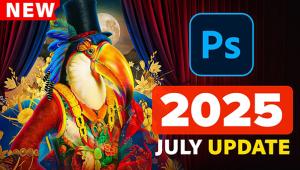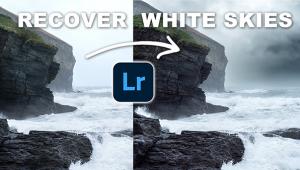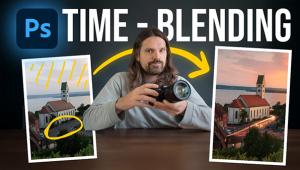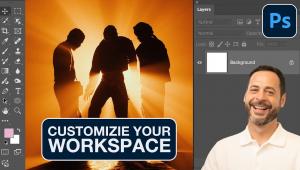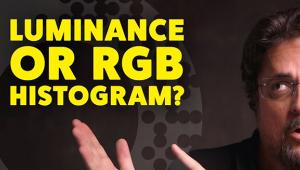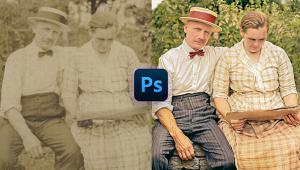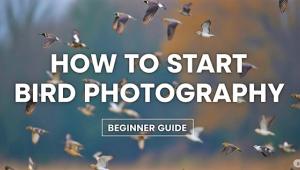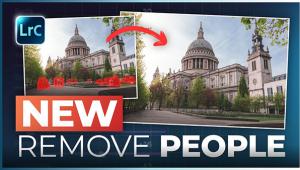Q&A For Digital Photography
To aid us in making Digital Help as helpful as possible, please be specific in your query and include components, including software, that you use. David says, “Make me guess the problem and I might guess wrong.”—Editor
Computer Specs For Photography
Q. I believe you stated in Shutterbug that the $799 Mac mini is the best low-cost computer for photographers. (I assume you were referring to the 2.5GHz mini with AMD Radeon graphics.)
Could you please clarify your reasons for specifying the $799 mini over the base model (albeit the base model with a memory upgrade to 8GB)? I doubt you consider the 2.5GHz processor (over the 2.3GHz) to be worth the additional $200. Therefore I must assume you value the AMD graphics card over the on-board Intel graphics, and the 4GB RAM over the 2GB RAM. Assuming a user plans to run only Lightroom on his or her mini, and assuming the user plans to upgrade the RAM to 8GB, does the graphics card warrant the price differential?
Bruce Smith
via e-mail
A. Don’t you use your vision to look at your photographs on screen and make editing changes based on your perception of the picture on screen? If not, then the independent AMD Radeon video card is of little value, so yes you can be a cheap shopper. Yes, 8GB of RAM is preferable if you use Photoshop and open many images and layers at one time. And yes, 2GB of RAM is really insufficient to make an image-editing application run efficiently.
You cannot accurately edit what you cannot see, and I have been using minis since Apple began the line and the one thing noticeably missing in the past was a good video card. You can read my full and thorough report on the 2011 Mac mini in this issue on page 84.
Do Newer Scanners Scan Faster?
Q. I have an old Epson Expression 1680 with a transparency adapter that I am using for scanning entire sheets of negatives encased in “Print File” archive pages, each page of negatives being scanned in a single pass for proofing purposes. (I’m not putting individual strips of negatives in a holder—that’s much too slow.) After reviewing each page of scanned sheets as a JPEG on my monitor, I am scanning selected frames with my Plustek 7600i. Due to the fact that I have thousands of Print File pages of negatives, the proofing is turning out to be a rather time-consuming process due to the 1680’s relatively slow scanning speed, but it does give me a way to closely examine each frame prior to scanning.
My question: will the Epson V700 or V750 scan entire pages of negatives like my 1680? If so, would it scan my Print File pages significantly quicker than my 1680? Or is there another brand that will scan quickly that’s worth buying?
Quentin Kardos
Columbia, MD
A. I also use the method of scanning a “Print File” page of 35mm negatives with one scan with an Epson Expression 1680. And yes, either of the Epson Perfection V700 series flat-bed scanners will do the same thing. But although there are other brands and models of flat-bed scanners that have film scanning capabilities, I don’t know of any currently available that also scan film using the entire scan format of the scanner. From my experience, if you scanned at the same resolution setting I don’t think you would find the Epson V700 or V750 would be very much faster. The inherent design of a flat-bed scanner limits the speed at which it can scan that large an area at high resolution.
Of course, if you reduce the scan resolution the scan will go a little quicker, but then you have less image information in the result of the scan. The one advantage the Epson V700 and V750 have is that these scanners have more lines of CCD sensors in the linear scan array so each pass gathers more information, so that should provide some speed advantage. How much I would guess would not make what you are doing a very much faster scan job. You would have to do a scan with your Expression 1680 and time it and then do the same thing with an Epson V700 and time that process—I have never had the opportunity to make that comparison test, so I can only guess the newer V700 would be faster, but I suspect it would not be a large difference.
Technology Can Get Ahead Of Itself
Q. I’m having trouble using Photoshop CS5’s Mixer Brush feature. Whenever I pull up this feature, my computer becomes slow and choppy. Is this a sign that my computer system is insufficient to handle CS5? I currently use an iMac that was bought in 2007 with a dual-core processor, 2.4GHz, 2GB memory, 4MB L2 cache, ATI Radeon HD 2600 graphics card. I know you’ve written in your column that iMacs aren’t the best for photo editing and I admit that it’s been a challenge getting prints to match what I see on screen, but I just can’t afford a Mac Pro. You’ve mentioned using the Mac mini but I’m really concerned that it’s just not powerful enough.
That leads me to my second question, have you heard of anyone having success with calibrating their iMac with ColorMunki? I’ve come across a few forums that have mentioned ColorMunki as the prime choice for calibrating iMac monitors. I appreciate any help you can give.
Orlando Guiang
via e-mail
A. The Mixer Brush feature in Photoshop CS5 is not one that I use; in fact, I do most of my photographic image editing with CS4. I found features like the Mixing Brush would be useful to illustrators, but I didn’t see any advantage other than manipulation applied to photographic images. Maybe I lack some imagination, but just because a feature is made available does not mean I have to use it, so I am a bit old-fashioned and get the job done somewhat more traditionally. Sorry, but I can’t say that the Mixing Brush would perform better on another platform without actually trying it.
However, these features may involve a combination of hardware support functions, including the main CPU and video card operation, and in a 2007 iMac there may be a limitation, as my impression of the latest Adobe features is they do push the hardware capacity pretty hard. But a Mac Pro may not be the answer as I have one and I do not find it can do things my latest, and even an older Mac mini cannot do. The Mac Pro is faster in some ways but that is due to a very robust I/O processor that moves image pixel data between RAM-video-screen faster (bigger pipes), not differences in the CPU or video card themselves. In other words, power is not just CPU speed but a long list of chip components that have different functions and are interrelated. In most 2D graphics processing the CPU actually does little of that work, but RAM and video are very involved and the movement of data between these functions is critical to good performance.
As to your second question, X-Rite recently released both a new i1Display Pro and a similar, less powerful ColorMunki for display color management. The new X-Rite i1Display Pro I tested and reported on is in the December, 2011, issue of Shutterbug, but I did not test it with an iMac as obviously I don’t own something I am critical of for doing digital photography. But I am informed that the new i1Display Pro will adjust, calibrate, and profile an iMac. The one software that many have used that does function directly with iMac video is the ColorEyes Display Pro, available from Integrated Color Corporation (www.integrated-color.com). It will allow adjusting the iMac’s white luminance to 80.0 or 90.0 CD/m2 to match the brightness of paper white.
Laptop Specs For Digital Photography
Q. I would appreciate a definitive set of specifications to order a laptop for the sole purpose of supporting my digital photography. I don’t intend to go beyond Photoshop Elements unless you can recommend a better program to catalog and do modest corrections. I believe the photo should be made in the camera. Building photos in the computer isn’t my thing. If I don’t come fairly close, I delete.
Don Gerrish
via e-mail
A. Part of the communications I receive from many Shutterbug readers includes information about the computers they use. Much of the feedback about Dell computers has been critical and not favorable to my encouraging a user to choose a Dell computer, although I do recommend a Dell UltraSharp U2410 desktop LCD display, and own one myself. Most of my photography colleagues who use laptops seem to overwhelmingly prefer Apple MacBook laptop computers.
However, I have never owned or used a laptop, so my information on them is secondhand—I hear about stuff that is involved in problems photographers experience and bring to my attention. So there is no laptop I can recommend on the basis of my own experience.
Automated Exposure Processing?
Q. I shoot mostly weddings in Raw with a Canon EOS 7D and import to Lightroom 3.2. I developed a preset that solves most color temp, saturation, fill, and highlight issues. My problem is adjusting exposure. Is there any program or preset that will batch process dozens of images at once, bringing underexposed images up and taking overexposed images down to some “standard exposure”? I know “standard exposure” is arguable but processing labs do this routinely. I also understand that deviation from a “standard” will be required for dramatic effect in some cases but having a consistent starting point is the goal.
Tom Read
Blue Heron Photo
A. I don’t think anyone in our real and limited world has replaced human eyesight with an exact robotic entity that can make intelligent perceptual judgments to adjust print brightness.
Possibly you are not adjusting image brightness effectively in your editing because your computer display does not match paper white in its brightness, and maybe isn’t even calibrated and profiled. If you can’t see on screen exactly what an image will look like on paper in a print then the file you sent to a printer has to be edited again. The answer is not simple, but it does work as I do it every day—edit images on screen and then click a couple of buttons and run a print that exactly matches what is edited on screen. You can do it, too.
ANNOUNCEMENT
I am pleased to announce the latest 4.3 Edition to my eBook Digital Darkroom Resource CD. The CD now contains 33 chapters totaling 399 pages in Adobe Acrobat .PDF format, providing easy-to-read text and large high-quality illustration. The CD is available for $20 plus $5 shipping and handling (US Mail if available). Ordering is as simple as sending a check or money order for $25 made out to me, David B. Brooks, and mailed to PO Box 2830, Lompoc, CA 93438.



















